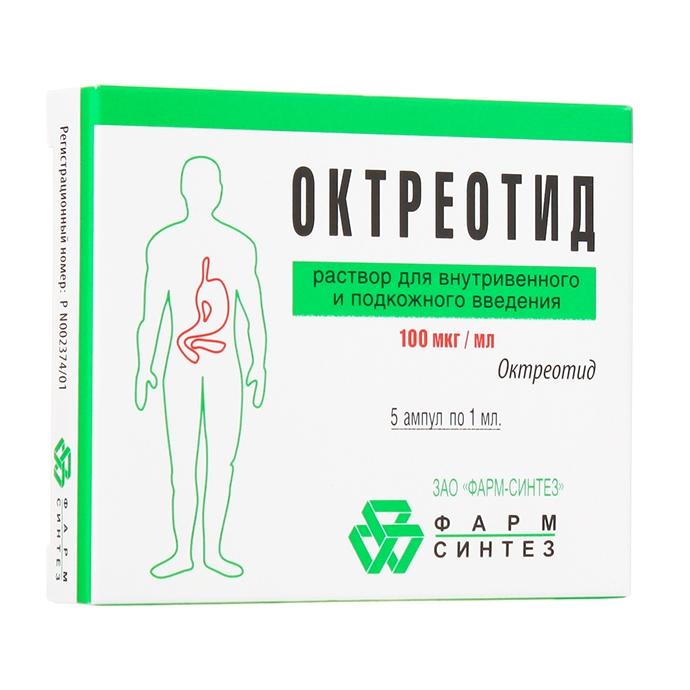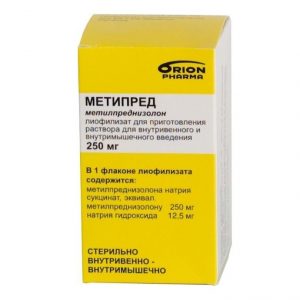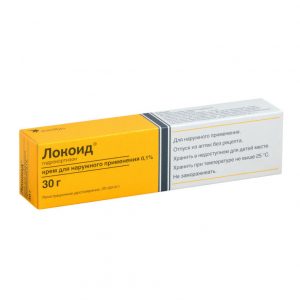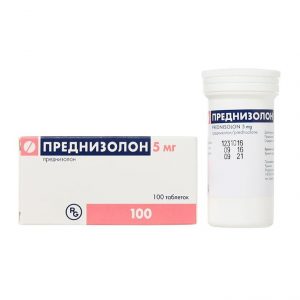Description
Latin name
Octreotide
Release form
Injection solution
Packing
5 ampoules of 1 ml.
Pharmacological action
Octreotide is a synthetic analogue of somatostatin, which is a derivative of the natural hormone somatostatin and has similar pharmacological effects, but a significantly longer duration of action. Octreotide suppresses the secretion of growth hormone, both pathologically increased and caused by arginine, physical activity and insulin hypoglycemia. The drug also inhibits the secretion of insulin, glucagon, gastrin, serotonin, both pathologically elevated and caused by food intake, also inhibits the secretion of insulin and glucagon, stimulated by arginine. Octreotide suppresses the secretion of thyrotropin caused by thyroliberin. Unlike somatostatin, octreotide inhibits the secretion of growth hormone to a greater extent than insulin secretion, and its administration is not accompanied by subsequent hypersecretion of hormones (for example, growth hormone in patients with acromegaly).
In patients with acromegaly, octreotide reduces the concentration of growth hormone and insulin-like growth factor (IGF-1) in blood plasma. A decrease in the concentration of growth hormone by 50% or more is observed in 90% of patients, while a concentration of growth hormone of at least 5 ng / ml is achieved in about half of the patients. In most patients with acromegaly, octreotide reduces the severity of headache, soft tissue swelling, hyperhidrosis, joint pain and paresthesia. In patients with large pituitary adenomas, treatment with octreotide can lead to some reduction in tumor size.
In case of secreting tumors of the gastroenteropancreatic endocrine system in cases of insufficient effectiveness of the therapy (surgery, embolization of the hepatic artery, chemotherapy, including streptozotocin and fluorouracil), the administration of octreotide can lead to an improvement in the course of the disease. So, with carcinoid tumors, the use of octreotide can lead to a decrease in the severity of sensations of flushing of the face, diarrhea, which in many cases is accompanied by a decrease in the concentration of serotonin in the plasma and excretion of 5-hydroxyindoleacetic acid by the kidneys. With tumors, characterized by hyperproduction of a vasoactive intestinal peptide (VIPom), the use of octreotide in most patients leads to a decrease in severe secretory diarrhea and, consequently, an improvement in the quality of life of the patient. At the same time, there is a decrease in concomitant disturbances in the electrolyte balance, for example, hypokalemia, which allows you to cancel the enteral and parenteral administration of fluid and electrolytes. In some patients, the progression of the tumor slows down or stops, and its size and the size of the liver metastases decrease. Clinical improvement is usually accompanied by a decrease in the concentration of vasoactive intestinal peptide (VIP) in plasma or its normalization. With glucagonomas, the use of octreotide leads to a decrease in migratory erythema. Octreotide does not have any significant effect on the severity of hyperglycemia in diabetes mellitus, while the need for insulin or oral hypoglycemic drugs usually remains unchanged. The drug causes a decrease in diarrhea, which is accompanied by an increase in body weight. Although the decrease in plasma glucagon concentration under the influence of octreotide is transient in nature, clinical improvement remains stable throughout the entire period of drug administration. In patients with gastrinomas / Zollinger-Ellison syndrome, when octreotide is used as monotherapy or in combination with proton pump inhibitors or H2 histamine receptor blockers, a decrease in hypersecretion of hydrochloric acid in the stomach, a decrease in the concentration of gastrin in the blood plasma, as well as a decrease in the severity of diarrhea and hot flashes . In patients with insulinomas, octreotide reduces the level of immunoreactive insulin in the blood (this effect can be short-term – about 2 hours). In patients with operable tumors, octreotide can ensure the restoration and maintenance of normoglycemia in the preoperative period. In patients with inoperable benign and malignant tumors, glycemic control may improve without a simultaneous prolonged decrease in blood insulin levels.
In patients with rare tumors that hyperproduce growth hormone releasing factor (somatoliberinomas), octreotide reduces the severity of acromegaly symptoms. This is due to the suppression of secretion of the releasing factor of growth hormone and growth hormone itself. In the future, pituitary hypertrophy may decrease.
When bleeding from varicose veins of the esophagus and stomach in patients with cirrhosis of the liver, the use of octreotide in combination with specific treatment (e.g. sclerotherapy) leads to more effective stopping of bleeding and early rebleeding, reducing the volume of transfusions and improving 5-day survival. It is believed that the mechanism of action of octreotide is associated with a decrease in organ blood flow through the suppression of vasoactive hormones such as VIP and glucagon.
Pharmacokinetics
Absorption
After s / c administration, octreotide is rapidly and completely absorbed. Tmax of octreotide in plasma – within 30 minutes.
Distribution of
Communication with plasma proteins is 65%. The binding of octreotide with blood cells is extremely small. Vd is 0.27 L / kg.
Excretion of
T1 / 2 after sc administration of octreotide is 100 min. After iv administration, the excretion of octreotide is carried out in 2 phases, with T1 / 2 – 10 and 90 minutes, respectively. Most of octreotide is excreted through the intestines, about 32% – unchanged by the kidneys. The total clearance is 160 ml / min.
Indications
Acromegaly – to control the main manifestations of the disease and reduce the level of growth hormone and IGF-1 in plasma in cases where there is no sufficient effect from surgical treatment or radiation therapy. Octreotide is also indicated for the treatment of patients with acromegaly who have refused the operation or who have contraindications for it, as well as for short-term treatment between the courses of radiation therapy until its effect
secretory endocrine tumors of the gastrointestinal tract and pancreas is fully developed – to control symptoms : carcinoid tumors with the presence of carcinoid syndrome VIPs of gastrinoma glucagonoma / Zollinger-Ellison syndrome – usually in combination with proton pump inhibitors and histamine H2 receptor insulin blockers (to control hypoglycemia in the preoperative period, as well as for maintenance therapy) with sorbole growth hormone factor).
stopping bleeding and preventing recurrence of bleeding from varicose veins of the esophagus and stomach in patients with cirrhosis of the liver. Octreotide is used in combination with specific therapeutic measures, for example, endoscopic sclerotherapy.
The drug is not an antitumor agent and its use cannot lead to the cure of this category of patients.
Contraindications
Hypersensitivity to octreotide or other components of the drug children under 18 years of age.
Precautions: cholelithiasis (gallstone disease) diabetes mellitus.
Pregnancy and lactation
Experience with octreotide in pregnant women is limited. The drug Octreotide should be used during pregnancy only if the intended benefit to the mother outweighs the potential risk to the fetus.
It is not known whether the drug passes into breast milk, so if you use the drug during lactation, you should refuse to breast-feed.
Composition
1 ml injection contains:
Active ingredient: octreotide
Excipients: sodium chloride, water d / and.
Dosage and Administration
Subcutaneous intravenously drip.
In case of acromegaly, s / c, at a dose of 300 mcg at intervals of 8 or 12 hours. This dose is used if the initial therapy is ineffective (drug Octreotide, solution for iv and s / c administration, 50-100 mcg at intervals of 8 or 12 h). Initial therapy failure is assessed based on monthly blood growth hormone concentrations (target concentration: growth hormone
In patients receiving stable dose of octreotide, growth hormone concentration should be determined every 6 months. If there is no significant decrease in octreotide after 3 months of treatment growth hormone concentrations and improvement of the clinical picture of the disease, therapy should be discontinued.
For tumors of the gastroenteropancreatic endocrine system – sc, in a dose 300 mcg 1-2 times a day. This dose is used in case of failure of initial therapy (drug Octreotide, solution for iv and sc administration, 50 mcg 1-2 times a day with a gradual increase to 100-200 mcg 3 times a day). The inefficiency of initial therapy is evaluated based on the achieved clinical effect, the effect on the concentration of hormones produced by the tumor (in the case of carcinoid tumors – the effect on the excretion of 5-hydroxyindoleacetic acid by the kidneys) and tolerance. In exceptional cases, the patient may be prescribed a dose in excess of 600 mcg / day, the dose of the drug can be gradually increased to 300-600 mcg 3 times a day. Maintenance doses of the drug should be selected individually. In carcinoid tumors, if octreotide therapy in the maximum tolerated dose for 1 week was not effective, treatment should not be continued.
In case of bleeding from varicose veins of the esophagus and stomach – iv drip at a rate of 25 mcg / h for 5 days.
Side effects of the
From the digestive system: very often – diarrhea, abdominal pain, nausea, constipation, bloating often – dyspeptic disorders, vomiting, feeling of fullness / heaviness of the abdomen, steatorrhea, soft consistency of the stool, discoloration of the stool, anorexia.
From the nervous system: very often – headache often – dizziness.
From the endocrine system: very often – hyperglycemia often – hypothyroidism / thyroid dysfunction (decreased levels of TSH, total and free thyroxine) hypoglycemia, impaired glucose tolerance.
From the hepatobiliary system: very often – cholelithiasis, i.e. formation of stones in the gallbladder often – cholecystitis, impaired colloidal stability of bile (formation of microcrystals of cholesterol), hyperbilirubinemia, increased activity of hepatic transaminases.
Dermatological reactions: often – itching, rash, hair loss.
From the respiratory system: often – shortness of breath.
From the CCC side: often – bradycardia infrequently – tachycardia.
General disorders and reactions at the injection site: very often – pain at the injection site infrequently – dehydration.
Following therapy with octreotide in clinical practice, the following adverse events were noted, regardless of the presence of a causal relationship with the use of the drug.
On the part of the immune system: anaphylactic reactions, allergic reactions / hypersensitivity.
Dermatological reactions: urticaria.
From the hepatobiliary system: acute pancreatitis, acute hepatitis without cholestasis, cholestatic hepatitis, cholestasis, jaundice, cholestatic jaundice, increased levels of alkaline phosphatase, GGT.
From the CCC side: arrhythmias.
Drug Interaction
Somatostatin analogues may reduce the clearance of substances, metabolized with the participation of isoenzymes of the cytochrome P450 system, which may be due to the suppression of growth hormone. With simultaneous use increases the bioavailability of bromocriptine with insulin – may increase the hypoglycemic effect with cyclosporine – decreases the absorption of cyclosporine, with cimetidine – slows down the absorption of cimetidine.
overdose
Symptoms: short-term heart rate, feeling of blood flow to the face, spastic abdominal pain, diarrhea, nausea, feeling of emptiness in the stomach.
Treatment: carrying out symptomatic therapy.
Storage conditions
The drug should be stored in a dark place at a temperature of 8 ° to 25 ° C.
Expiration
5 Chron
pharmacy terms with prescription
Dosage form
dosage form
injection and infusion




